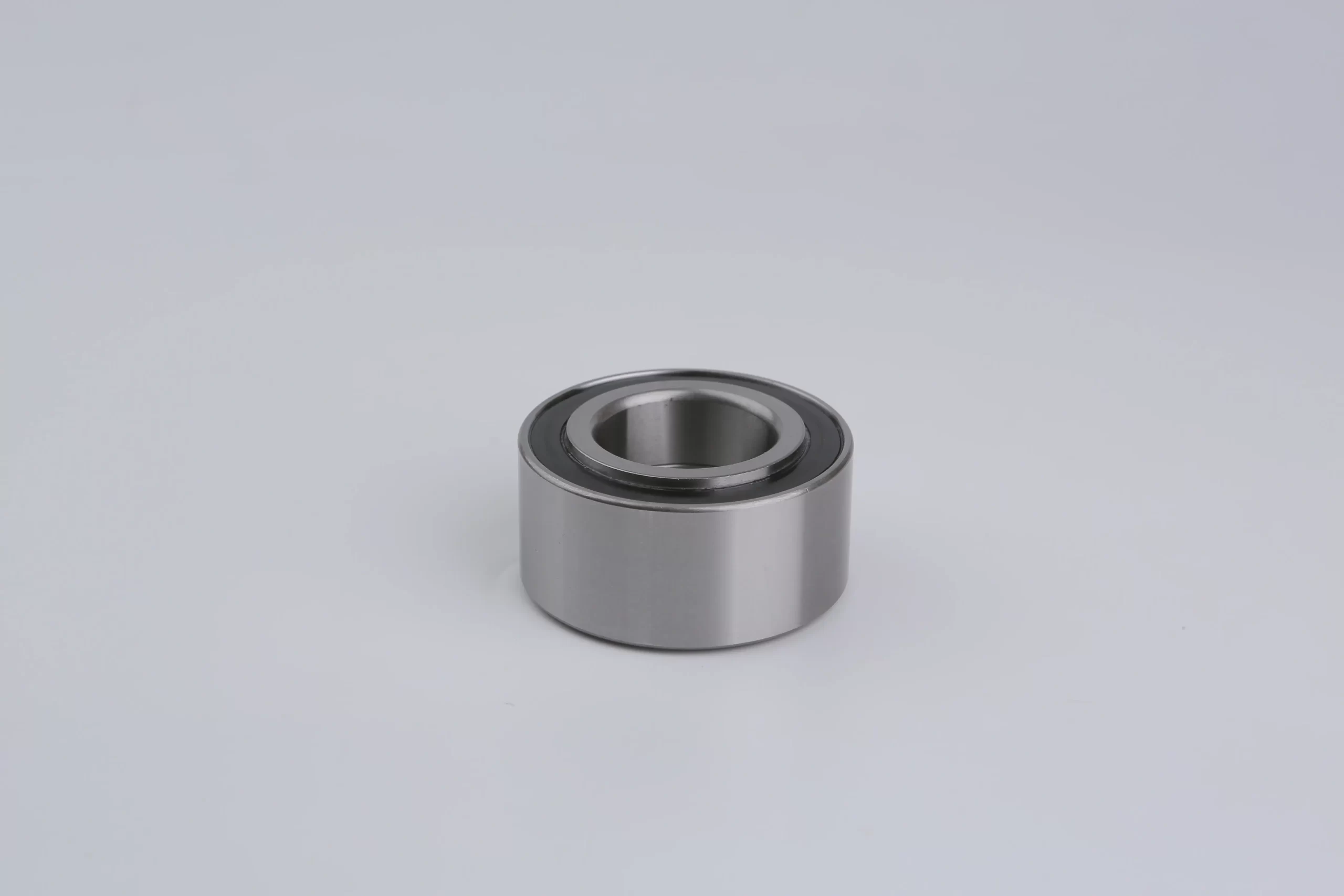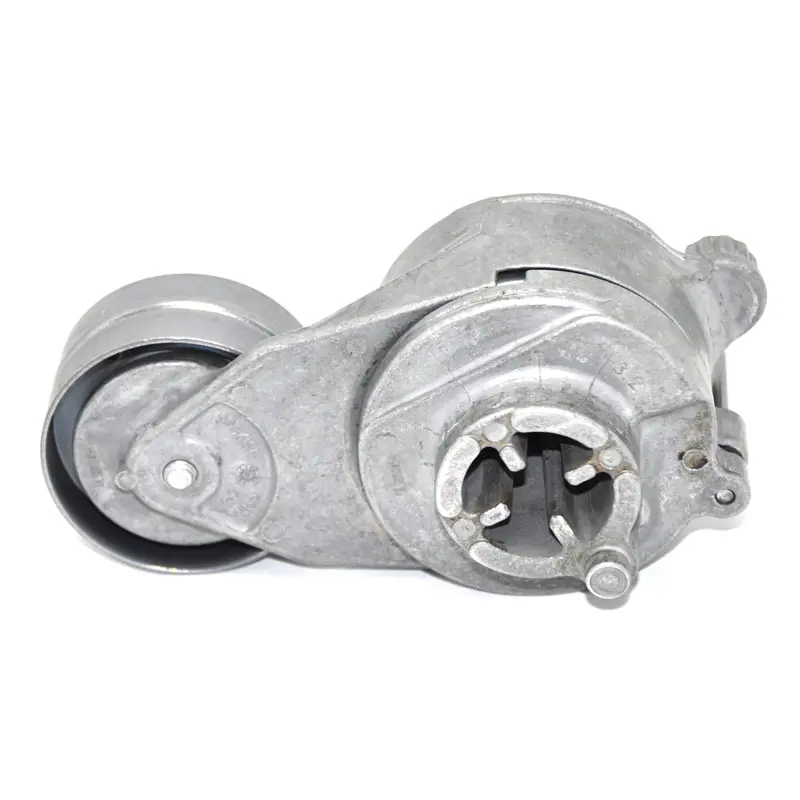Diseño y estructura de los rodamientos de rodillos cónicos de doble hilera
Rodillos cónicos
Los rodamientos de rodillos cónicos de doble hilera están diseñados para gestionar cargas radiales y axiales sustanciales desde ambas direcciones, lo que los hace cruciales para aplicaciones de alta exigencia. Los rodillos están dispuestos en dos hileras, cada una de ellas con una conicidad precisa que facilita una distribución óptima de la carga. Este diseño minimiza la tensión sobre los rodillos y prolonga la vida útil del rodamiento.
- Diseño de rodillos: La forma cónica de los rodillos les permite hacer contacto en un ángulo más amplio con las pistas de rodadura. Esto garantiza una distribución uniforme de la carga y mejora la capacidad del rodamiento para soportar fuerzas significativas. El diseño también ayuda a reducir las concentraciones de tensiones, lo que se traduce en una mayor durabilidad.
Anillos interior y exterior
Los anillos interior y exterior, también conocidos como pistas interior y exterior, forman los componentes estructurales principales del rodamiento. Estos anillos están meticulosamente diseñados para proporcionar un ajuste perfecto a los rodillos cónicos, garantizando una transferencia de carga eficiente y minimizando el desgaste.
- Material del anillo: Normalmente fabricados en acero de alta resistencia, los anillos se someten a un tratamiento térmico para aumentar su dureza y resistencia al desgaste. La elección del material y el tratamiento son cruciales para mantener el rendimiento del rodamiento bajo cargas pesadas y condiciones adversas.
Retenedor
El retén, o jaula, desempeña un papel vital en el mantenimiento de la funcionalidad del rodamiento. Espacia los rodillos uniformemente y evita que entren en contacto entre sí, lo que es esencial para un funcionamiento suave y una fricción reducida.
- Funcionalidad de la jaula: El retenedor ayuda a evitar la inclinación y la desalineación de los rodillos, que pueden provocar un desgaste prematuro o el fallo de los rodamientos. Su diseño garantiza que cada rodillo funcione de forma independiente dentro de su espacio designado, lo que mejora la eficiencia general.
Sellos
La tecnología de sellado está integrada en el diseño para proteger el rodamiento de contaminantes externos como la suciedad, el agua y los residuos. Esta protección es esencial para mantener el rendimiento a largo plazo y evitar el fallo prematuro del rodamiento.
- Tipos de juntas: Las obturaciones avanzadas se utilizan para mantener los lubricantes dentro del rodamiento y protegerlo de los contaminantes ambientales. Esta característica es crucial para mantener los niveles de lubricación y garantizar que el rodamiento funcione sin problemas durante toda su vida útil.
Aplicaciones de los rodamientos de rodillos cónicos de doble hilera
Bujes de rueda para automóviles
En el sector de la automoción, los rodamientos de rodillos cónicos de doble hilera se emplean habitualmente en los cubos de rueda, proporcionando un soporte esencial para la rotación de la rueda. Se utilizan tanto en los cubos de rueda delanteros como en los traseros, donde soportan importantes cargas radiales y axiales.
- Función en vehículos: Estos rodamientos garantizan un funcionamiento suave de las ruedas y soportan el peso del vehículo al tiempo que absorben las fuerzas que se producen durante la conducción. Su robusto diseño los hace ideales para aplicaciones de alta carga en vehículos.
Maquinaria pesada
Más allá de los usos en automoción, estos rodamientos forman parte integral de la maquinaria pesada y los equipos industriales. Su capacidad para soportar cargas sustanciales los hace adecuados para diversas aplicaciones en maquinaria que exige un alto rendimiento y fiabilidad.
- Aplicaciones industriales: En maquinaria pesada, los rodamientos de rodillos cónicos de doble hilera se utilizan en cajas de engranajes, sistemas transportadores y otros equipos en los que la fiabilidad del soporte de carga y la durabilidad son fundamentales. Su elevada capacidad de carga y su resistencia en condiciones difíciles los hacen indispensables.
Medidas de control de calidad
Selección y ensayo de materiales
- Inspección de materias primas: Realizamos inspecciones y pruebas exhaustivas de las materias primas para garantizar que cumplen estrictas normas de calidad. Esto incluye análisis de composición química y pruebas mecánicas para verificar las propiedades de los materiales.
Fabricación de precisión
- Precisión dimensional: Nuestros procesos de fabricación emplean técnicas avanzadas para garantizar dimensiones y tolerancias precisas. La maquinaria automatizada y la calibración periódica garantizan la uniformidad y consistencia en todos los lotes de producción.
Pruebas exhaustivas
- Pruebas multietapa: Los rodamientos se someten a pruebas exhaustivas, que incluyen evaluaciones de precisión dimensional, capacidad de carga y velocidad de rotación. Las pruebas de resistencia simulan diversas condiciones de funcionamiento para garantizar la fiabilidad y el rendimiento a largo plazo.
Certificación y conformidad
- Cumplimiento de las normas: Cumplimos normas de calidad internacionales como la ISO 9001, lo que demuestra nuestro compromiso de mantener procesos de fabricación de alta calidad. Las auditorías y revisiones periódicas garantizan el cumplimiento continuo de las normas del sector.
Comentarios de los clientes y mejora continua
- Integración de la retroalimentación: Incorporamos activamente los comentarios de los clientes para mejorar nuestros productos y procesos. Nuestro compromiso con la mejora continua impulsa la investigación, el desarrollo y la innovación en tecnología de rodamientos.
Consejos de instalación y mantenimiento
Instalación correcta
- Herramientas y técnicas: Utilice las herramientas correctas y siga las especificaciones del fabricante en cuanto a par de apriete y alineación para evitar daños. Evite aplicar una fuerza excesiva para evitar daños en los cojinetes o componentes.
Lubricación regular
- Calidad del lubricante: Aplique el tipo y la cantidad de lubricante recomendados, asegurándose de que esté limpio y libre de contaminantes. Compruebe y reponga periódicamente la lubricación para mantener un rendimiento óptimo.
Ajuste y alineación correctos
- Comprobaciones de alineación: Asegúrese de que el rodamiento encaja correctamente en su alojamiento y en el eje. Compruebe periódicamente la alineación con herramientas de precisión para evitar el desgaste irregular y el fallo prematuro.
Manipulación adecuada
- Cuidado de la manipulación: Manipule los rodamientos con cuidado para evitar daños físicos durante el transporte y la instalación. Utilice guantes limpios para evitar la contaminación y evite dejar caer o golpear el rodamiento.
Siguiendo estos principios de diseño, medidas de control de calidad y consejos de mantenimiento, puede garantizar la fiabilidad y el rendimiento de los rodamientos de rodillos cónicos de doble hilera en diversas aplicaciones exigentes.
